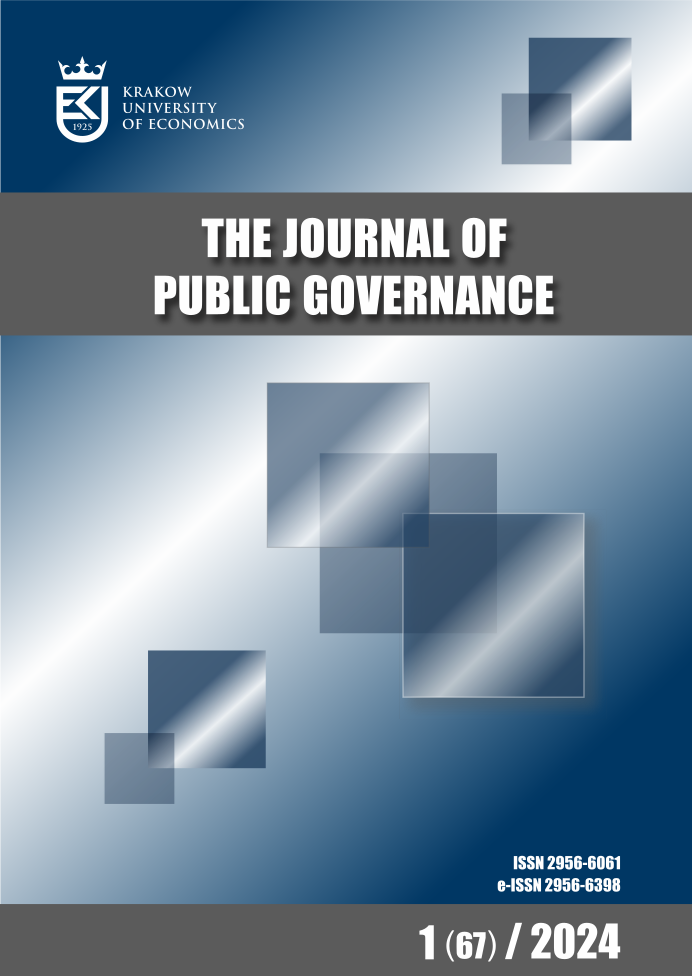The Potential of Developing Complex and Unique Fintech Solutions in Kraków’s Business Services Centres
DOI:
https://doi.org/10.15678/ZP.2021.56.2.04Keywords:
fourth industrial revolution; fintech; business services centres; Kraków, internet of things, internet of servicesAbstract
The development of the concept of the Internet of Things and Internet of Services solutions gave rise to changes in the financial sector, especially in the area of Fintech. The aim of this article is to assess the potential for the development of Fintech solutions in outsourcing and offshoring firms operating in Krakow. The manuscript contains an analysis of a survey conducted among the employees of Krakow’s branches of business services centres carried out in order to determine the relationship between the technological changes that have occurred in companies in the last 5 years and the complexity and uniqueness of the services provided. The results of the analysis show that BSC companies in Krakow have a high potential to develop services in the field of new financial technologies. Research has shown a significant relationship between the technological changes that have occurred in the last 5 years in the BSC sector and the complexity and uniqueness of the services provided by this sector. Research results may be important for public authorities, which should support the development and embedding of BSCs through a number of activities.
Downloads
References
Aspire (2019). Aspire Headcount Tracker. Retrieved from https://www.aspire.org.pl/wp-content/uploads/The-ASPIRE-Headcount-Tracker-2019-Executive-Summary.pdf
Beier, G., Ullrich, A., Niehoff, S., Reißig, M., & Habich, M. (2020). Industry 4.0: How it is defined from a sociotechnical perspective and how much sustainability it includes – A litera-ture review. Journal of Cleaner Production, 259, 120856. https://doi.org/10.1016/j.jclepro.2020.120856
Black, N. J., Lockett, A., Winklhofer, H., & Ennew, C. (2001). The adoption of Internet financial services: a qualitative study. International Journal of Retail & Distribution Man-agement.
Chen, M. A., Wu, Q., & Yang, B. (2019). How Valuable Is FinTech Innovation? The Re-view of Financial Studies, 32(5), 2062–2106. https://doi.org/10.1093/rfs/hhy130
Deloitte (2016). Fintech in CEE: Charting the course for innovation in financial services technology. Retrieved from https://www2.deloitte.com/content/dam/Deloitte/global/Documents/About-Deloitte/central-europe/ce-fintech-in-cee-region-2016.pdf
Du Boff, R. B. (1980). Business Demand and the Development of the Telegraph in the United States, 1844–1860. Business History Review, 54(4), 459–479. https://doi.org/10.2307/3114215
Fleisch, E. (2007). What is the Internet of Things? An Economic Perspective. Http://www.Alexandria.Unisg.Ch/Publikationen/68983, Auto-ID White Paper.
Gilchrist, A. (2016). Industry 4.0: The industrial internet of things. Apress; Distributed by Springer Science+Business Media New York. http://proquest.tech.safaribooksonline.de/9781484220474
Gimpel, H., Rau, D., & Röglinger, M. (2018). Understanding FinTech start-ups – a taxono-my of consumer-oriented service offerings. Electronic Markets, 28(3), 245–264. https://doi.org/10.1007/s12525-017-0275-0
Halstenberg, F. A., Steingrímsson, J. G., & Stark, R. (2017). Material Reutilization Cycles Across Industries and Production Lines. In R. Stark, G. Seliger, & J. Bonvoisin (Eds.), Sus-tainable Production, Life Cycle Engineering and Management. Sustainable manufacturing: Challenges, solutions and implementation perspectives (Vol. 29, pp. 163–173). SpringerOpen. https://doi.org/10.1007/978-3-319-48514-0_11
Heng, S. (2014). Industry 4.0: upgrading of Germany's industrial capabilities on the horizon. Available at SSRN 2656608.
Hoag, C. (2006). The Atlantic Telegraph Cable and Capital Market Information Flows. The Journal of Economic History, 66(2), 342–353. Retrieved from www.jstor.org/stable/3874880
ING (2015). ING International Survey: Mobile Banking, New Technologies and Financial Behaviour. The rise of mobile banking and the changing face of payments in the digital age. Retrieved from https://think.ing.com/uploads/reports/ING_International_Survey_Mobile_Banking_2015.pdf
Kagermann, H., Helbig, J., Hellinger, A., & Wahlster, W. (2013). Recommendations for Im-plementing the Strategic Initiative INDUSTRIE 4.0: Securing the Future of German Manu-facturing Industry ; Final Report of the Industrie 4.0 Working Group: Forschungsunion. Re-trieved from https://books.google.pl/books?id=AsfOoAEACAAJ
Lasi, H., Fettke, P., Kemper, H. G., Feld, T., & Hoffmann, M. (2014). Industry 4.0. Busi-ness & Information Systems Engineering, 6(4), 239–242.
Lee, J., Kao, H. A., & Yang, S. (2014). Service innovation and smart analytics for industry 4.0 and big data environment. Procedia Cirp, 16(1), 3–8.
Nicoletti, B. (2017). The Future of FinTech. Cham: Springer International Publishing. https://doi.org/10.1007/978-3-319-51415-4
Puschmann, T. (2017). Fintech. Business & Information Systems Engineering, 59(1), 69–76. https://doi.org/10.1007/s12599-017-0464-6
PwC (2017). Global FinTech Report 2017: Redrawing the lines: FinTech’s growing influ-ence on Financial Services.
Russell, W. H. (2011). The Atlantic Telegraph: Cambridge University Press.
Schueffel, P. (2017). Taming the Beast: A Scientific Definition of Fintech. Journal of Inno-vation Management, 4(4), 32–54. https://doi.org/10.24840/2183-0606_004.004_0004
Soriano, J., Heitz, C., Hutter, H. P., Fernández, R., Hierro, J. J., Vogel, J., Edmonds, A., & Bohnert, T. M. (2013). Internet of Services. In E. Bertin, N. Crespi, & T. Magedanz (Eds.), LNCS Sublibrary: SL 3 - Information Systems and Applications, incl. Internet/Web and HCI. Evolution of telecommunication services: The convergence of telecom and Internet: technolo-gies and ecosystems (Vol. 7768, pp. 283–325). Springer. https://doi.org/10.1007/978-3-642-41569-2_14
Stock, T., & Seliger, G. (2016). Opportunities of Sustainable Manufacturing in Industry 4.0. Procedia Cirp, 40, 536–541. https://doi.org/10.1016/j.procir.2016.01.129
Tesch da Silva, Fernanda Schafer, da Costa, C. A., Paredes Crovato, C. D., & Rosa Righi, R. d. (2020). Looking at Energy through the Lens of Industry 4.0: a Systematic Liter-ature Review of Concerns and Challenges. Computers & Industrial Engineering, 106426. https://doi.org/10.1016/j.cie.2020.106426
Vives, X. (2017). The impact of FinTech on banking. European Economy. (2), 97–105.
Waupsh, J. (2017). Bankruption: How community banking can survive fintech. Hoboken, New Jersey: Wiley.
Winston, B. (1998). Media technology and society: a history: from the telegraph to the Inter-net: Psychology Press.
Zalan, T., & Toufaily, E. (2017). The Promise of Fintech in Emerging Markets: Not as Dis-ruptive. Contemporary Economics. (Vol. 11, No. 4), 415–430. Retrieved from https://ssrn.com/abstract=3200954



